It wasn’t all that long ago that many people would have laughed at the idea of a full-size truck for overlanding. But these days, they’re all the rage, and it’s not hard to understand why. While many mid-size trucks are struggling with a lack of power and feeble payloads, their siblings offer an abundance of each. They can accommodate the large tire sizes we want with less lift, come with solid axles, and often achieve better fuel economy than smaller trucks and SUVs when modified. This is no doubt why vehicles like the AEV Prospector have become so popular of late. Today, we want to look at something a little different: an F-350 build by Goose Gear, perhaps the baddest full-size overland truck we’ve seen this year.
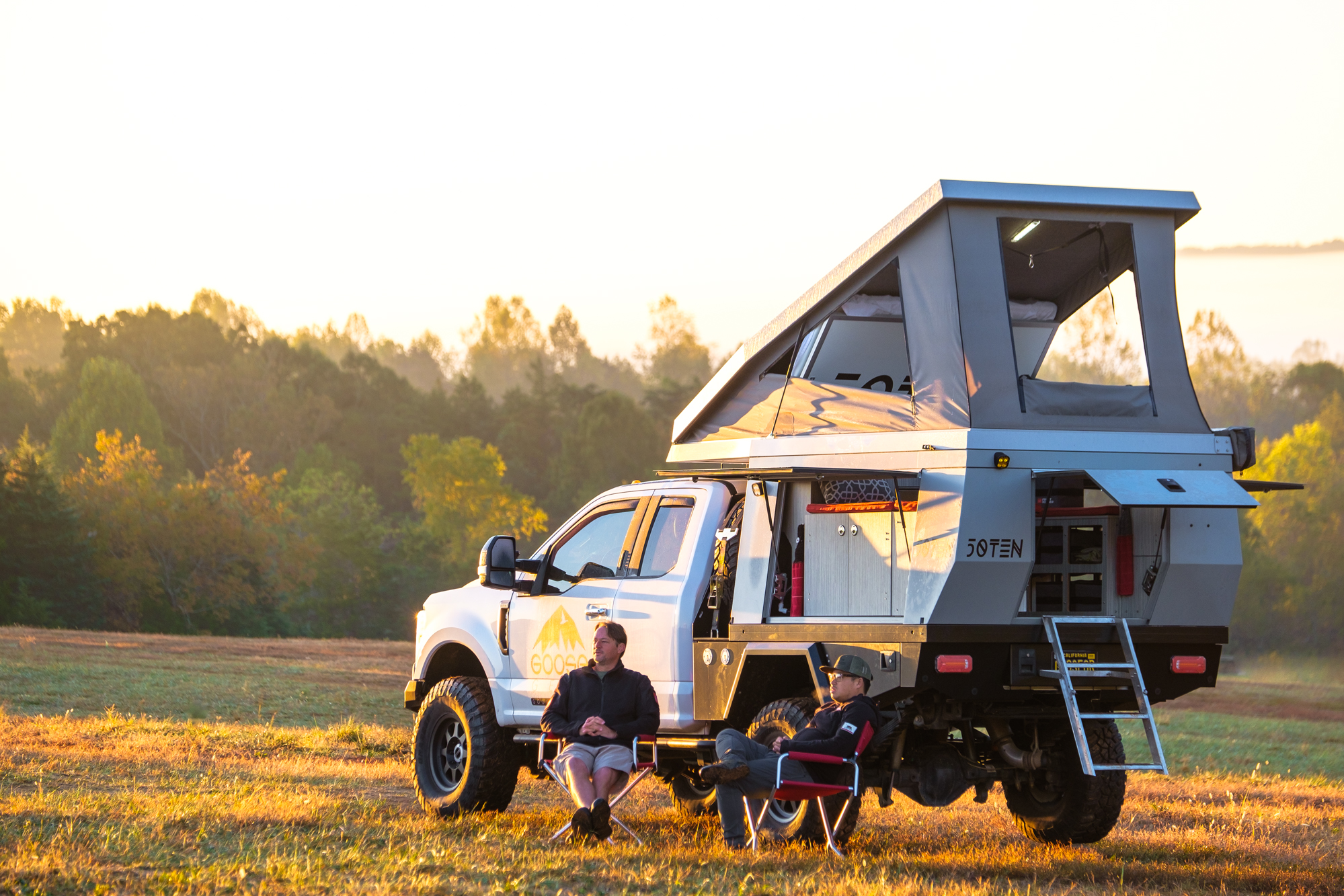

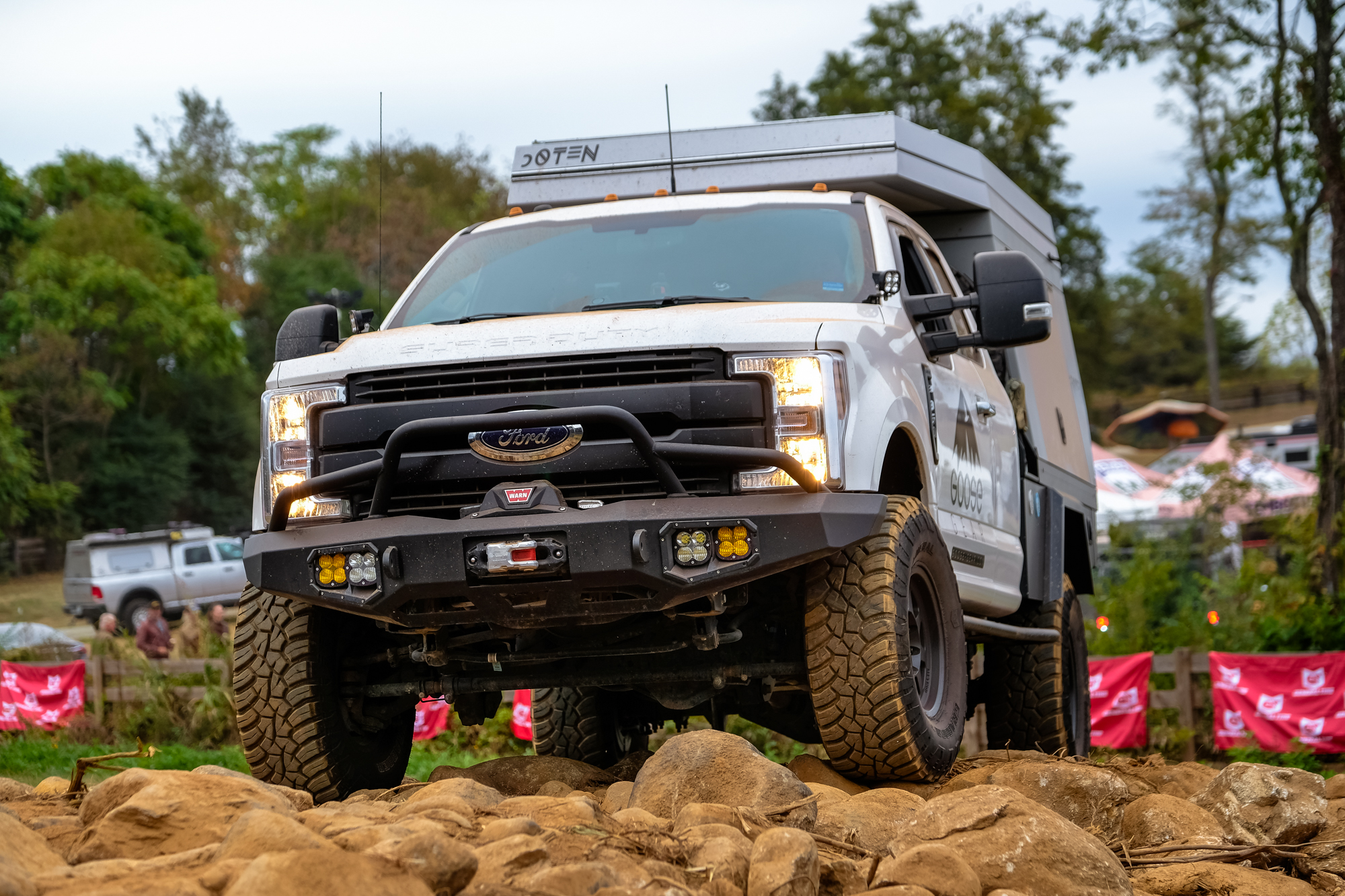
Factory Specs
2018 F350 Lariat Super Cab short bed (6.75-foot bed)
6.7L turbo-diesel V8, 440 horsepower, 925 pound-feet torque
Stock weight, 6,557 pounds
GVWR, 11,500 pounds
Payload, 4,943 pounds
Factory Rear E Locker
Dual heavy-duty alternators totaling 440 amps
Engine block heater

The Build
Like many full-size converts, Brian of Goose Gear graduated from a mid-size truck, specifically a third-gen Tacoma. While that build was one of the coolest out there, the large tires and additional weight made it feel too heavy and sluggish for his liking, and he began his hunt for something new. His requirements? A vehicle with the power and payload to take his family across the country in comfort, the capability to tackle technical trails, and the suspension performance to fly down desert backroads without worry. No big deal, right? Several options arose, but it was the Ford F-350 that fit the bill. Its stock 6.7L diesel produces 440 horsepower and a whopping 925 pound-feet of torque, the GVWR tips the scales at 11,500 pounds, and a factory locker with solid axles would provide plenty of potential for the trail. It was an ideal start. All that it needed were a few carefully selected modifications to turn it into the overland truck of his, and now our dreams. 
Suspension
The first step was swapping suspensions. The F-350 is a tow pig and unsurprisingly sprung like one, which is why Brian turned to one of the top names in full-size suspension systems, Carli. He selected their 2.5-inch pin top kit with Carli Spec King reservoir shocks on all four corners and then paired that with Carli coils in the front, and custom Deaver springs in the rear. Carli then took the truck at its loaded weight and tuned the shocks to match the load and new rear springs perfectly.
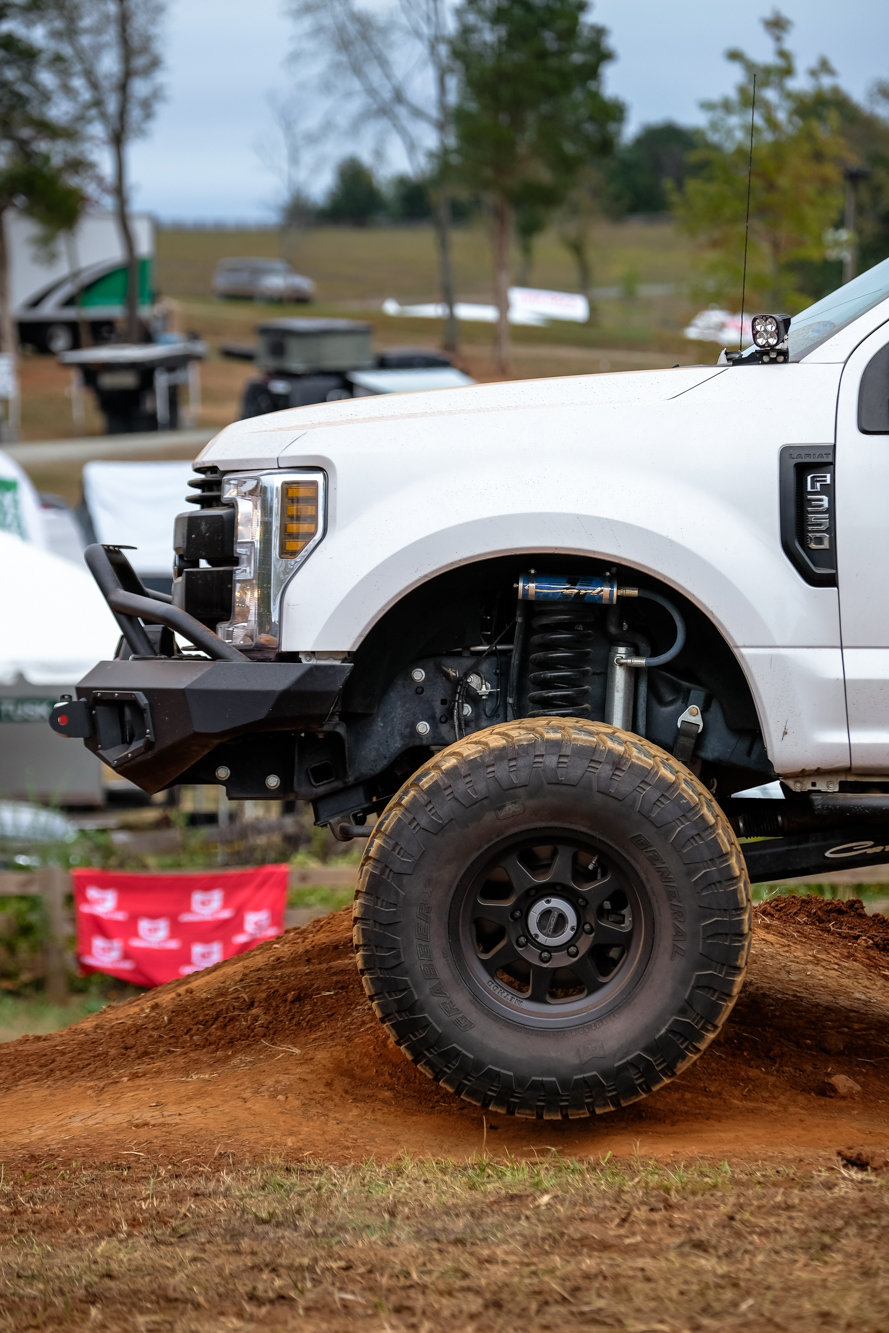

“When I went to Deaver to talk to them about my custom request, I told the guys ‘I need springs that are built for a load 1,600 pounds heavier than stock in the rear, but they also have to ride like a 1970’s Cadillac and maintain the 16 inches of travel that the standard Carli specified springs would have.’ They looked at me like I was nuts, but I stared back with a blank face until the guy responded with, ‘Wow, you’re serious. You’re really going to make me work hard on these springs, aren’t you?’ I simply replied, ‘Yes.’ The result after a final retune from Carli, though, is perfection.”

Wheels and Tires
With the additional height of the suspension, Brian mounted 17-inch Method 701s wrapped in 37×12.50R17 General Grabber X3s. Besides the clean look, the 701’s offer Method’s “bead grip technology” which acts like a light-duty bead-lock, allowing you to run lower tire pressures with less chance of rolling the bead and getting a flat. When combined with the side-wall strength and excellent traction of the X3, there are few places Brian doesn’t feel confident going.
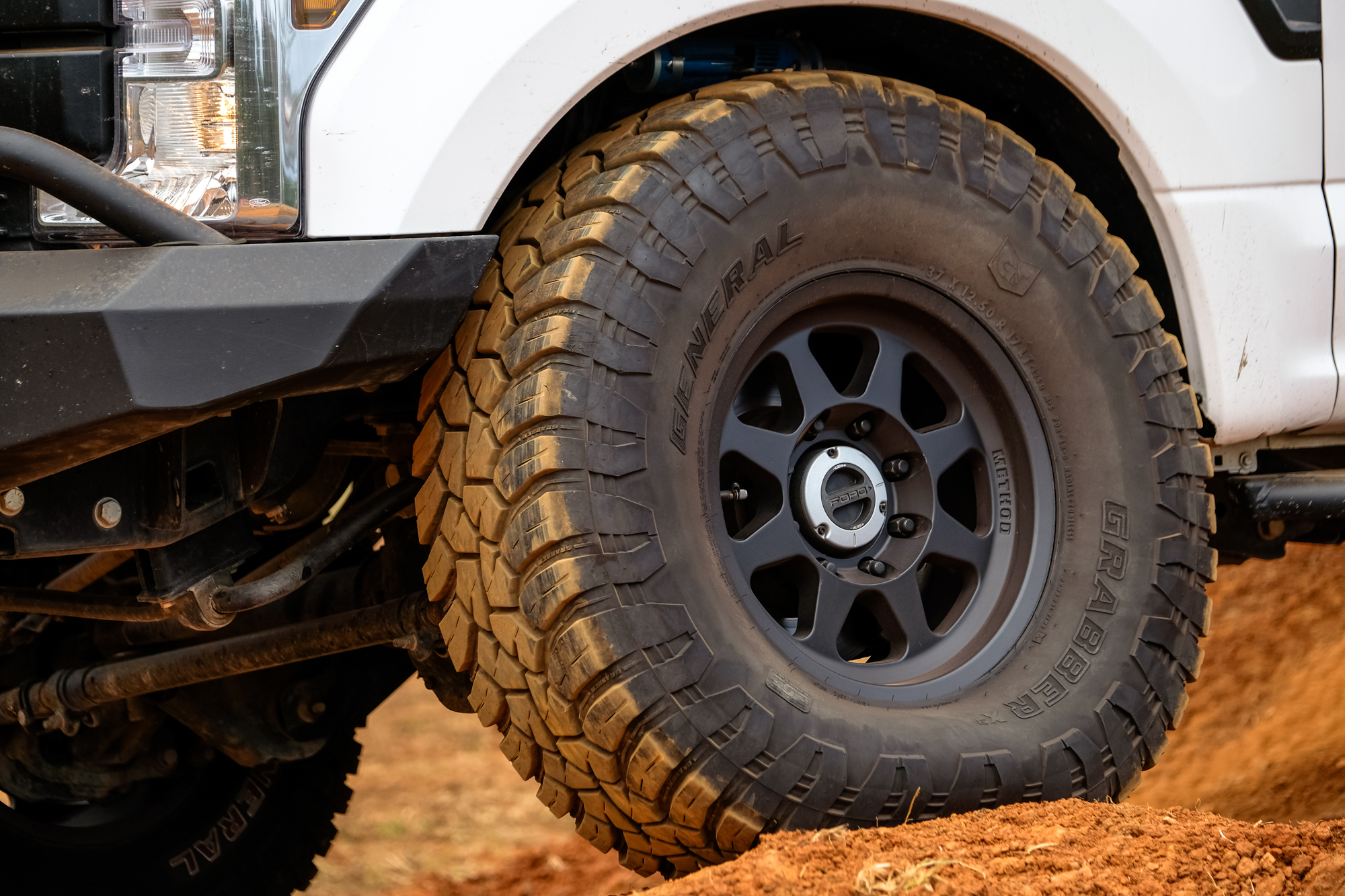
“I believe the X3 may be the best crossover tire I have used. After 15,000 miles, they are still fairly quiet given the aggressive tread, and the wear pattern is beautiful despite being on such a heavy truck. No signs of deforming, cupping, etc. The BFGs didn’t do nearly as well under this big rig, and the Falken MTs weren’t as good as I had hoped, so I will certainly be running the Grabbers again in the future.”
Armor
Although Goose Gear’s F-350 is one of the shortest super-duty models available, it still has a 148-inch wheelbase, which means that armor is going to be important, especially around the rocker panels. Unfortunately, sliders for these trucks are few and far between, so Brian turned to the folks at Castle Fab for a build-to-order set capable of withstanding some serious trail shenanigans. “I wanted something as strong as an ox, and Castle definitely delivered. I’ve dropped the truck on the sliders and literally spun the vehicle sideways around a boulder without damage, and I’m sure I’ll wind up doing it again.”
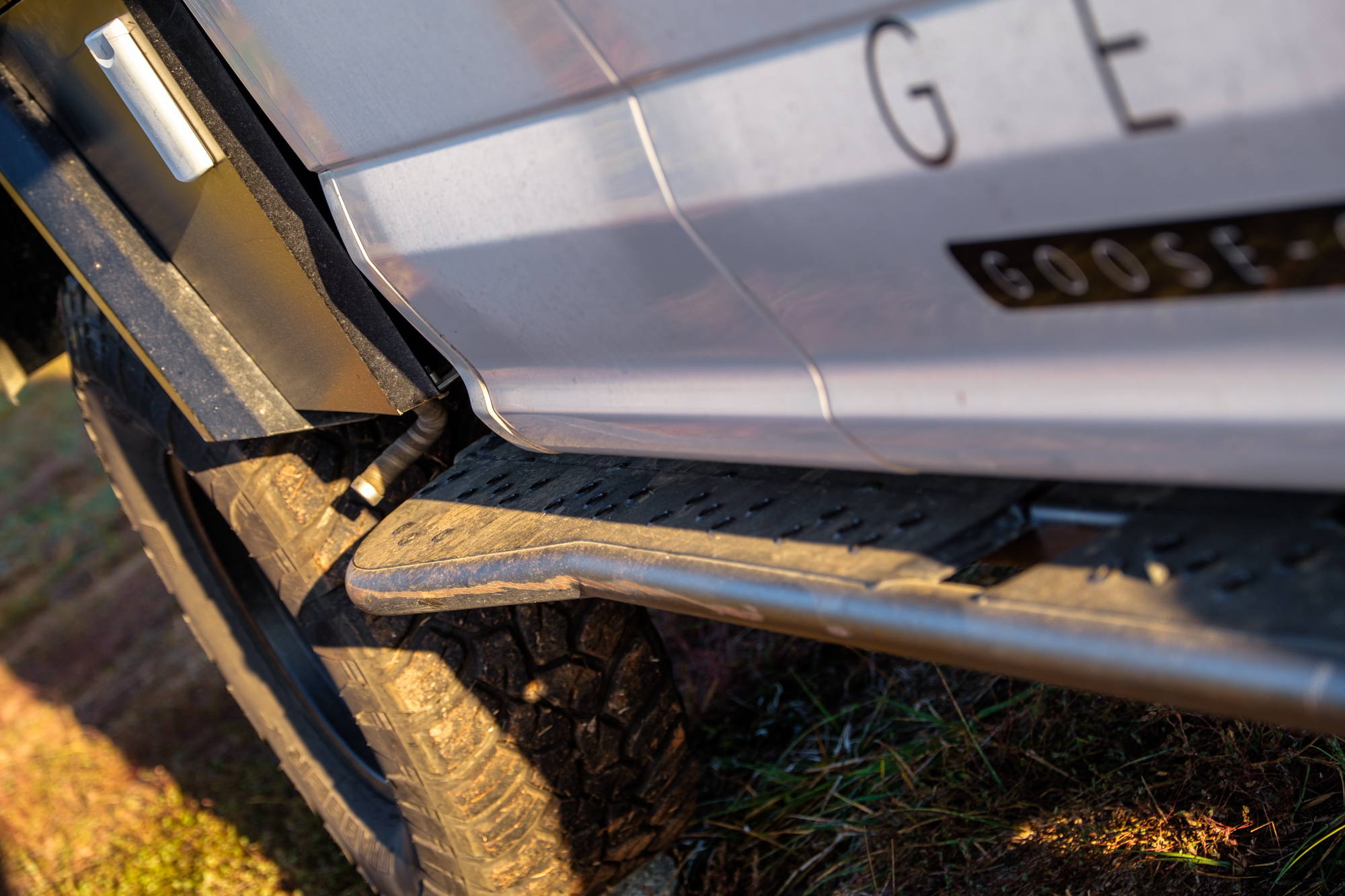
The front end is protected by a Warn bumper which also improves the approach angle and is equipped with a 12,000-pound winch for recovery. Brian notes that was a bit of a mixup, though, and that the Warn one is being swapped to a proper 16,500-pound model to match the truck’s weight soon. The bumper also sports four Baja Designs XL80 lights that complement the two ditch lights above the hood.
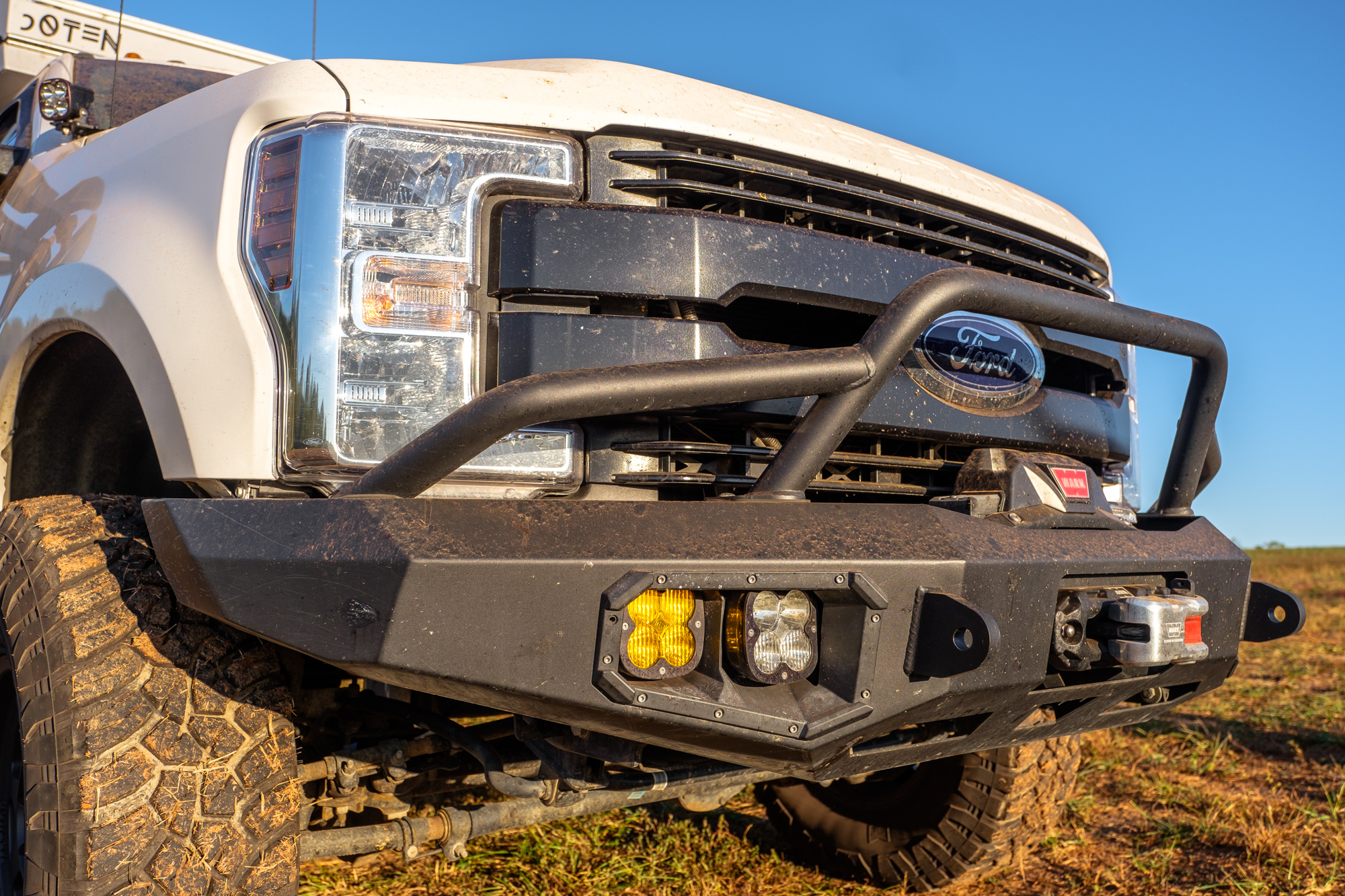
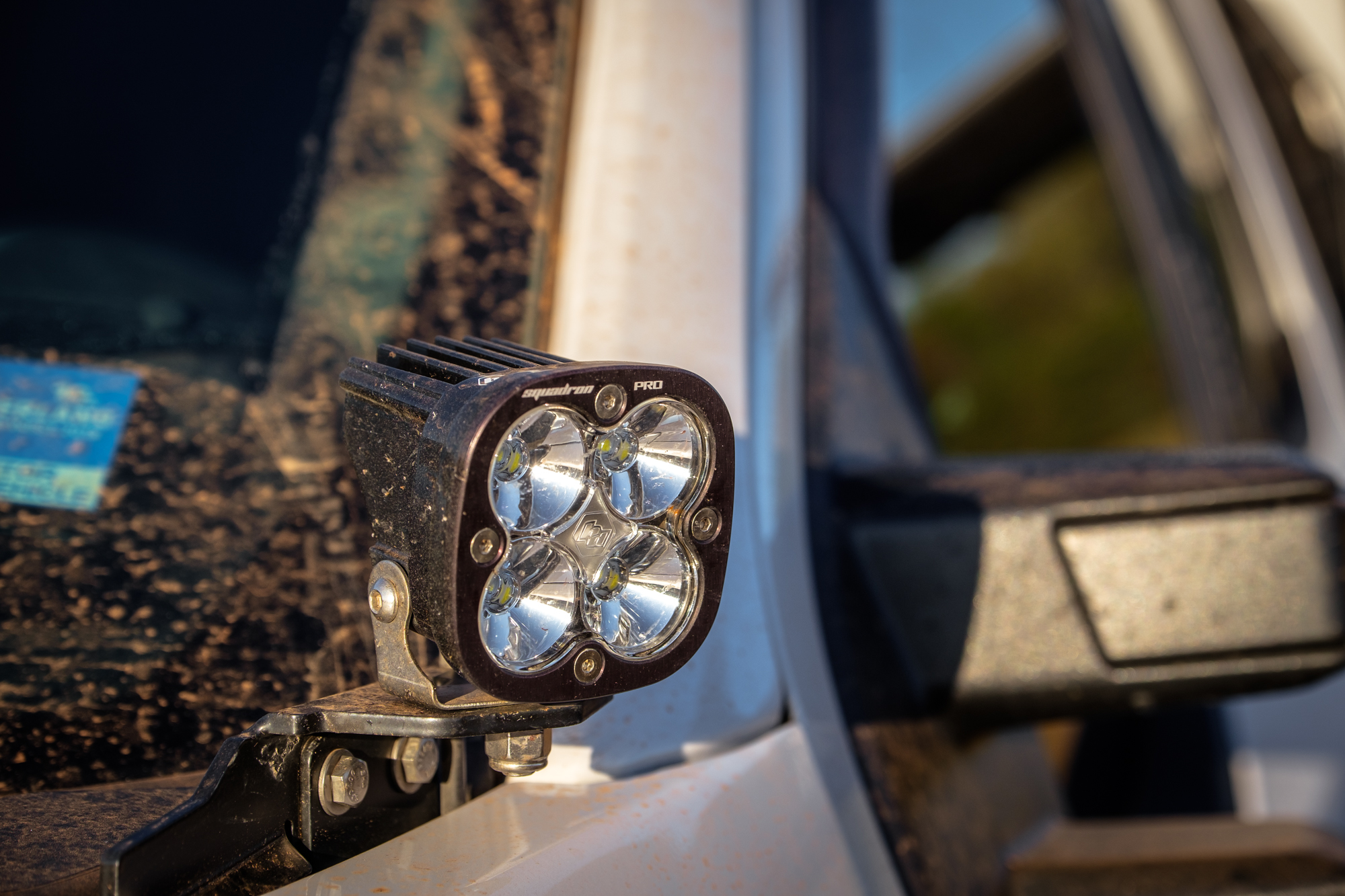
The FiftyTen Camper
And finally, we arrive at this truck’s pride and joy, the FiftyTen camper. If you haven’t read about these units so far, you can get all of the details in our story on them here, but to sum it up, these fully aluminum modular camper systems are made in Germany and are comprised of a flatbed, canopy, and pop-top tent. The base tray features side storage boxes behind the wheels and a storage drawer in the rear for tools and fluids, and can be used as a flatbed for hauling cargo or as the base for the camper box which mounts to it. The camper itself is also built from aluminum and features two large gull-wing-style doors on the sides, a lift door for entry and exit in the rear, and an optional tire carrier specifically designed to accommodate sizes up to 40 inches for large trucks. Onboard air is available from two Extreme Outback Endura compressors and a 5-gallon reserve air tank with air chucks located on either side of the truck for easy access. All of this weighs in at approximately 1,200 pounds, but after removing the factory truck bed, Goose Gear only wound up with a net gain of around 900 pounds.
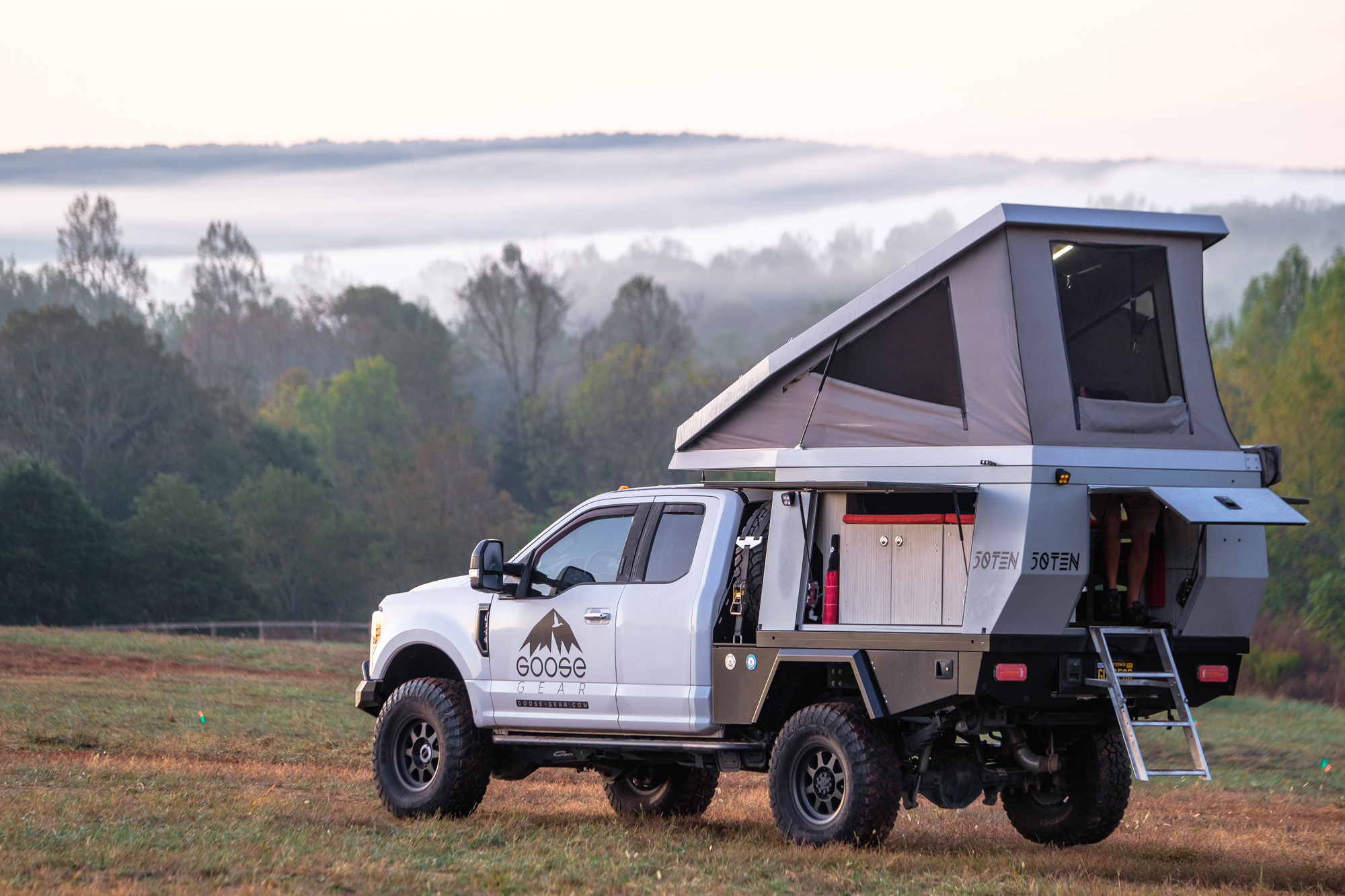
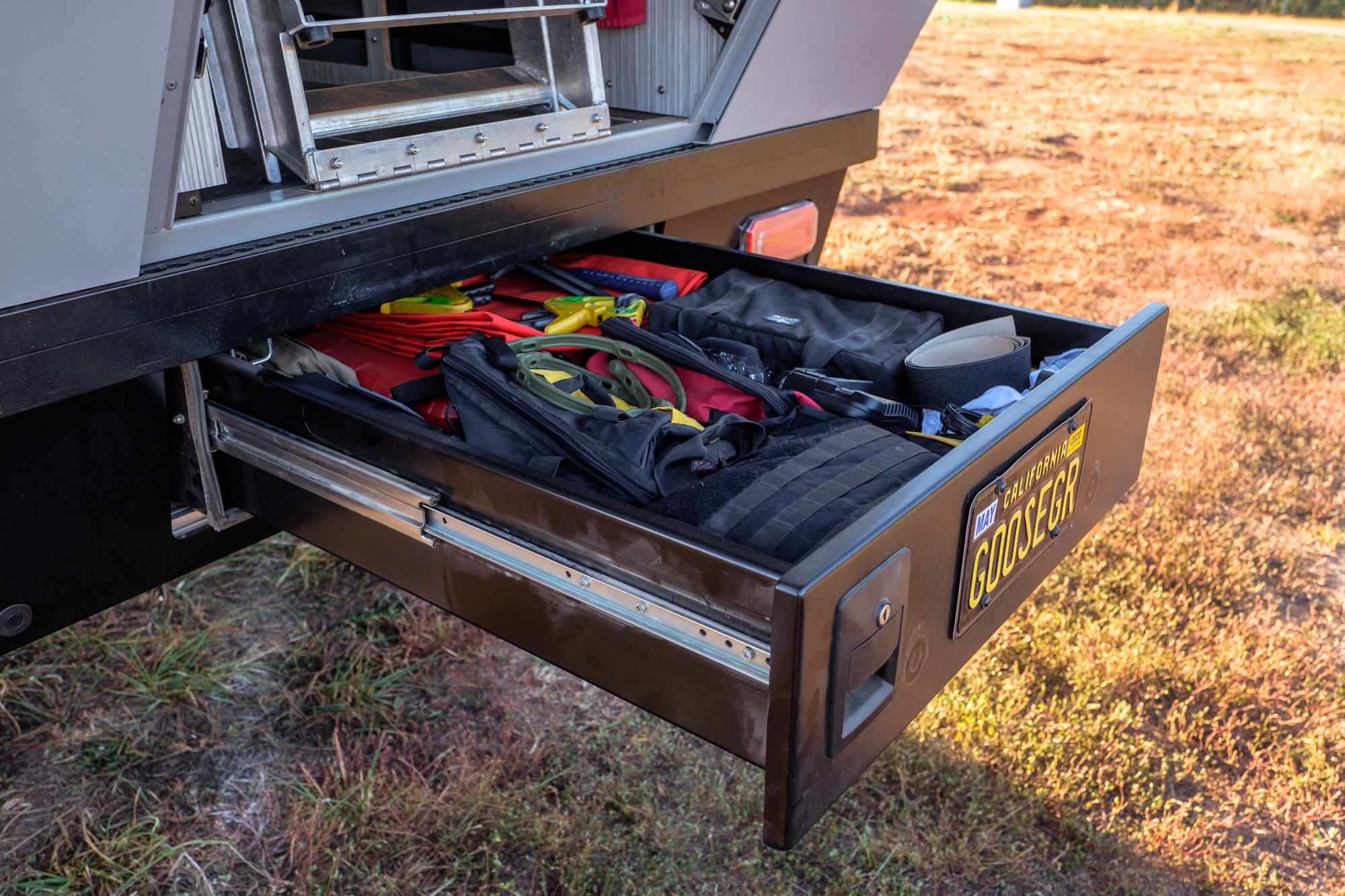
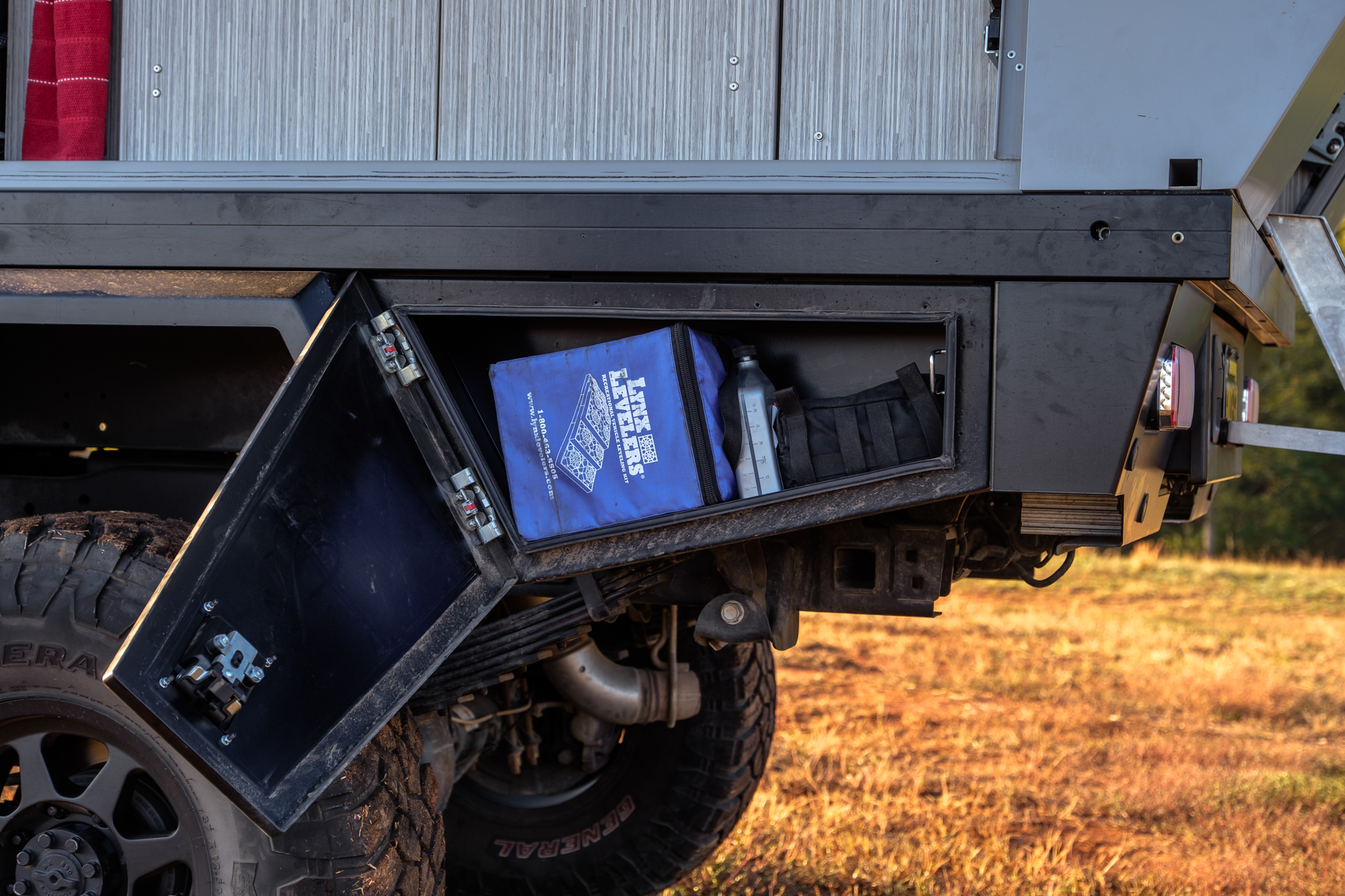
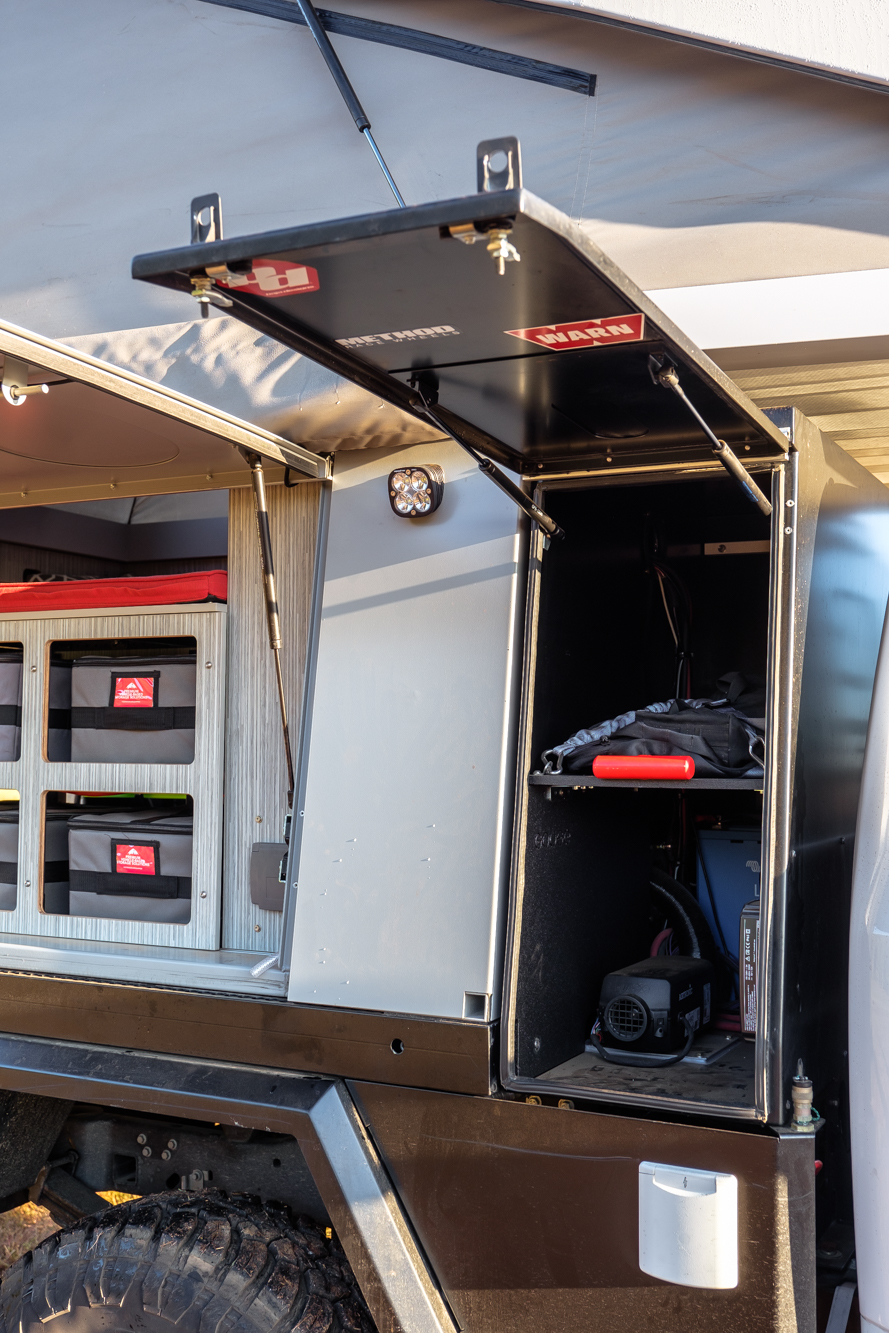
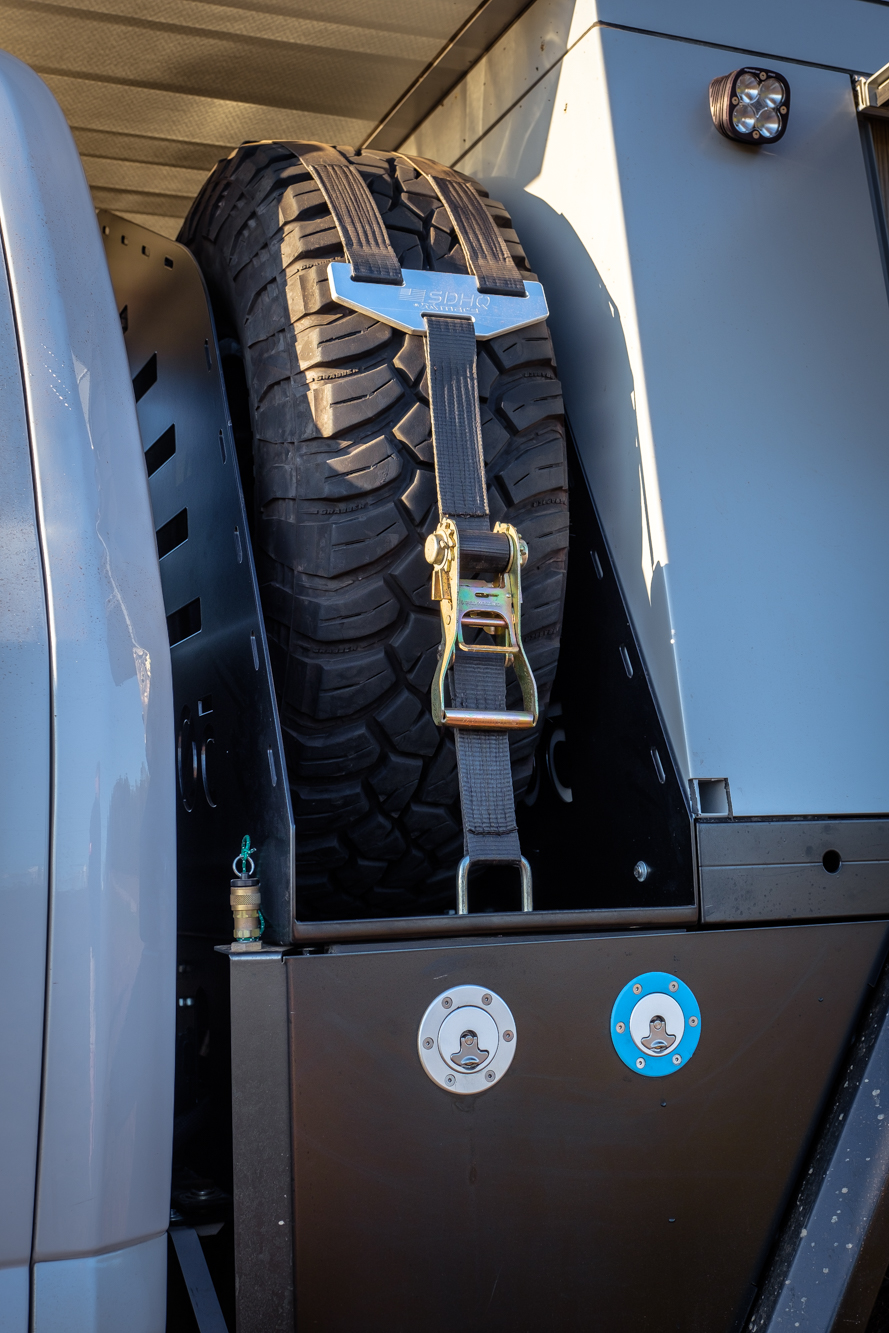
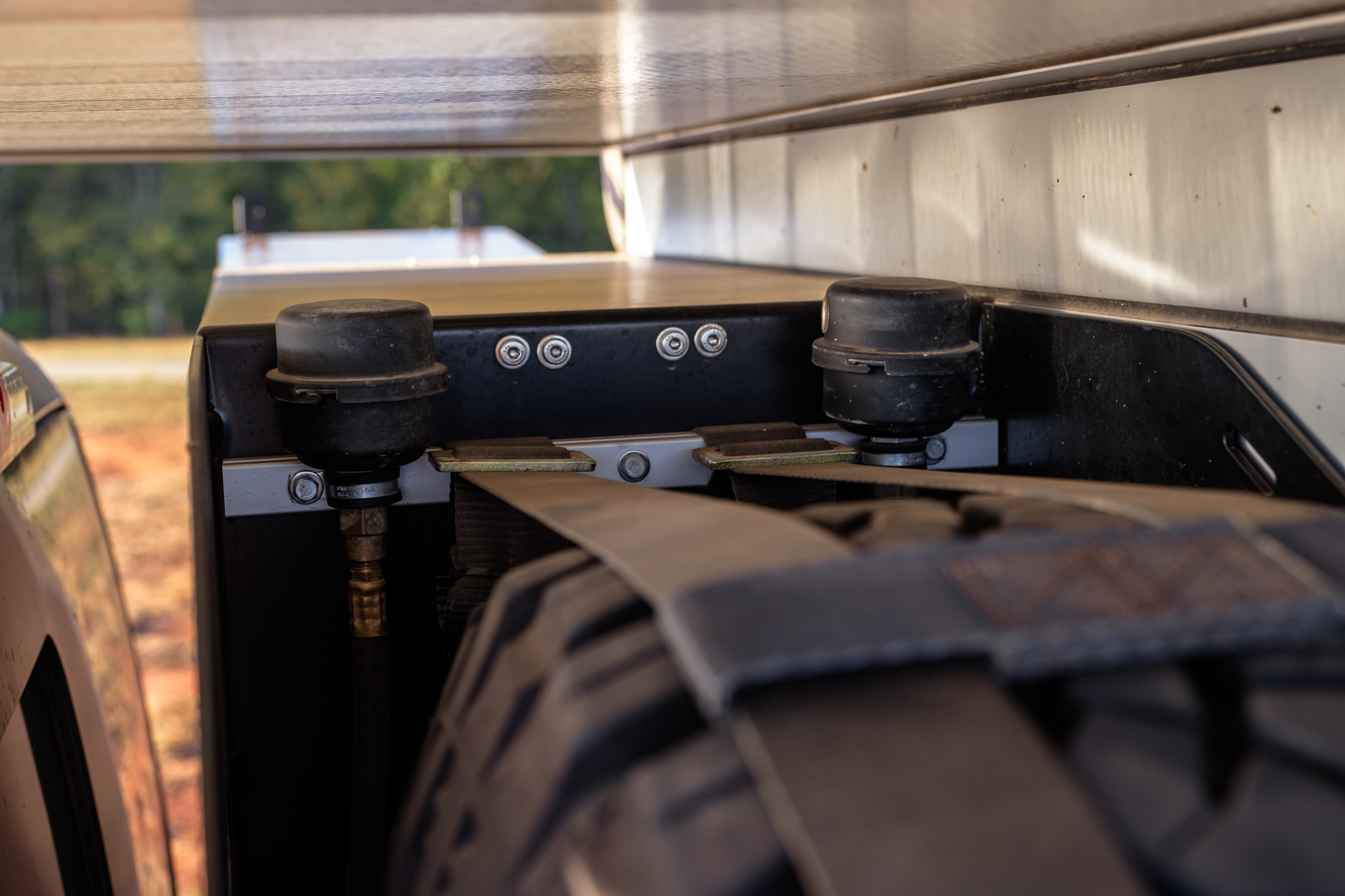
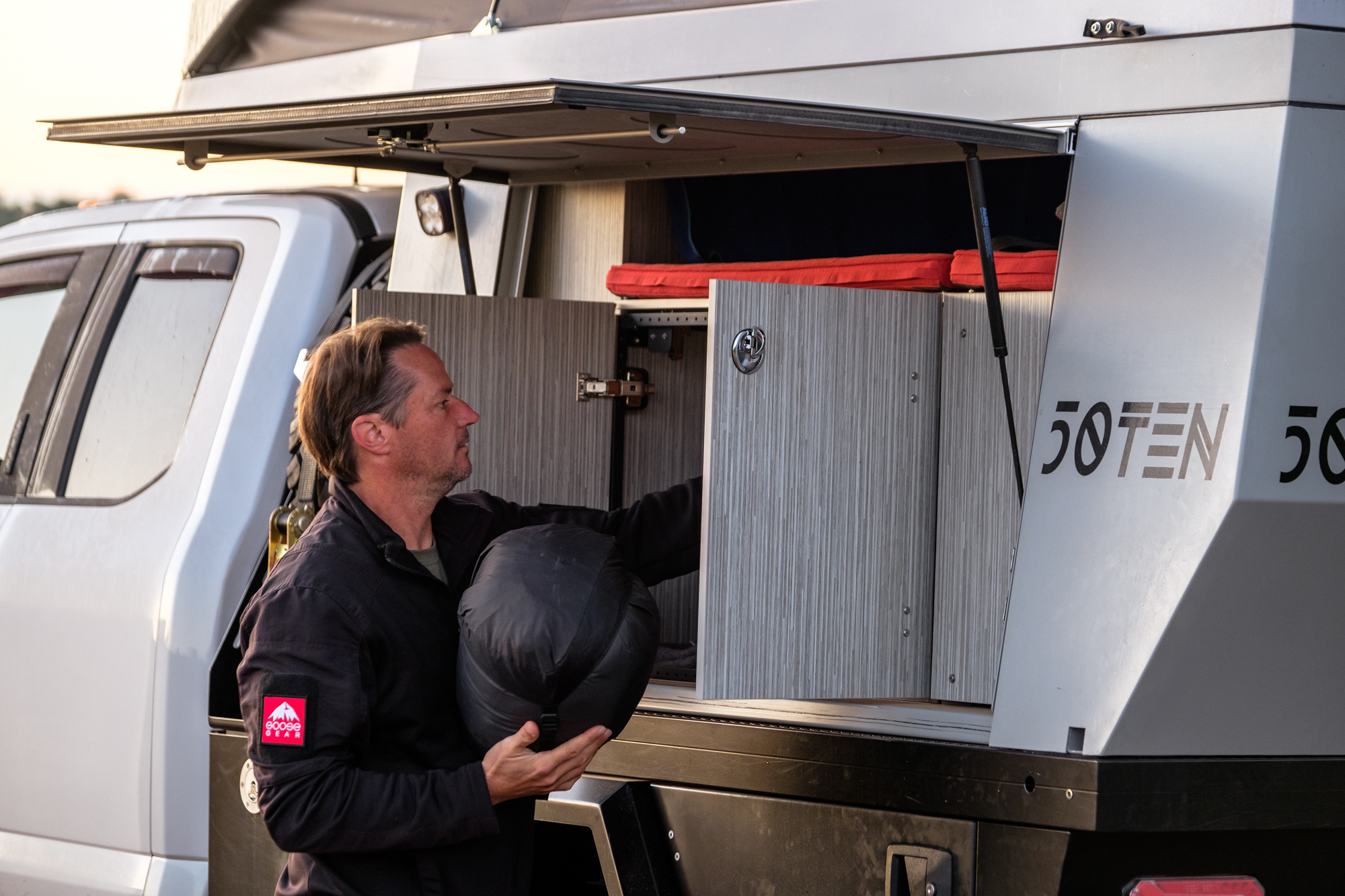
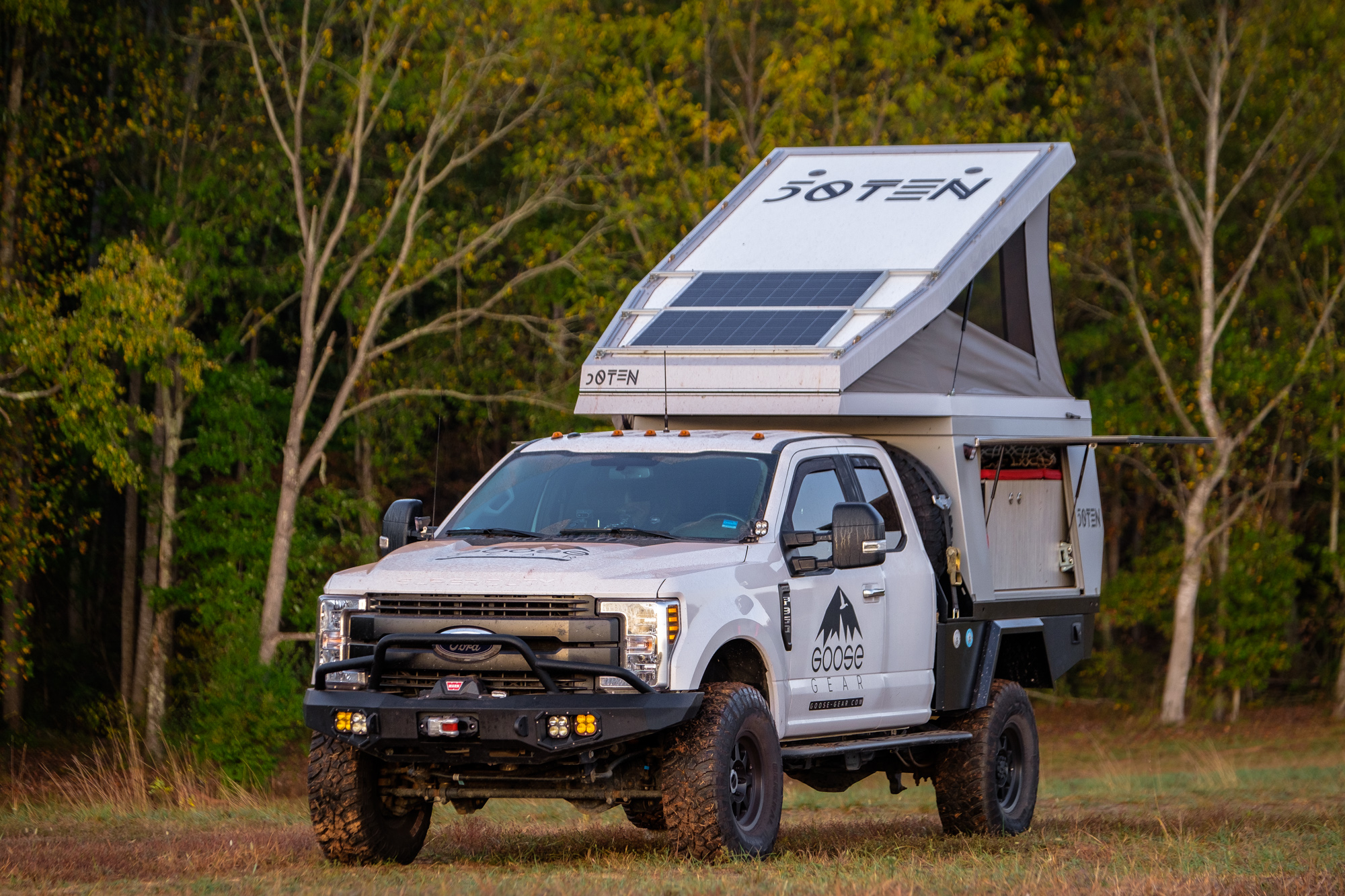
Of course, that’s before factoring in the interior. Much like a Four-Wheel Camper shell unit, the standard FiftyTen arrives as a blank slate with a bed, which is why Brian developed this magnificent layout from their S-Series product line. “The Interior systems we (Goose Gear) developed for the FiftyTen campers are part of our S-Series product line. We designed them to be stronger and lighter than the M-Series modules that we have been using in SUVs since the start of the company, and tailored them specifically for higher-end campers, expedition vehicles, and vans.”


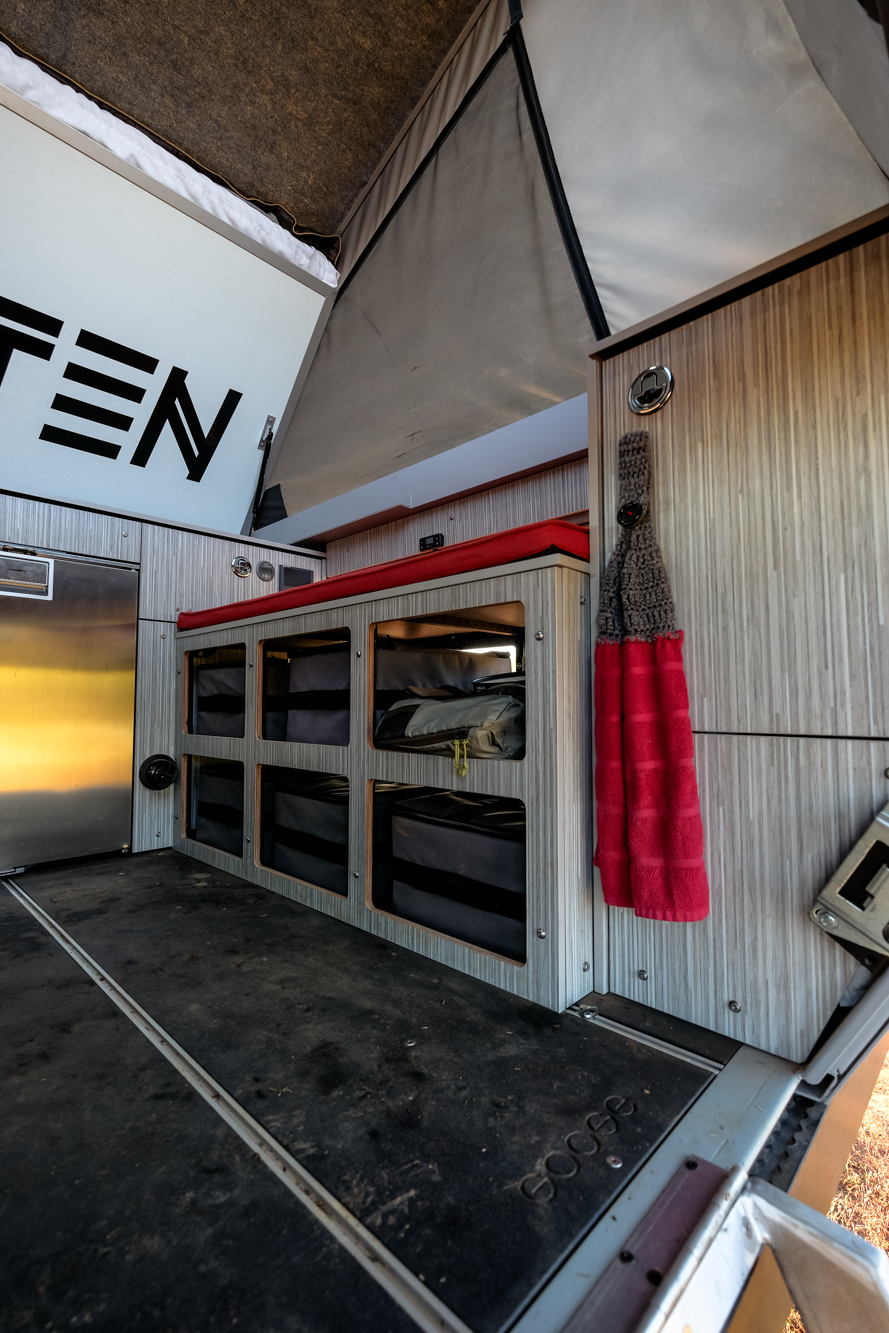
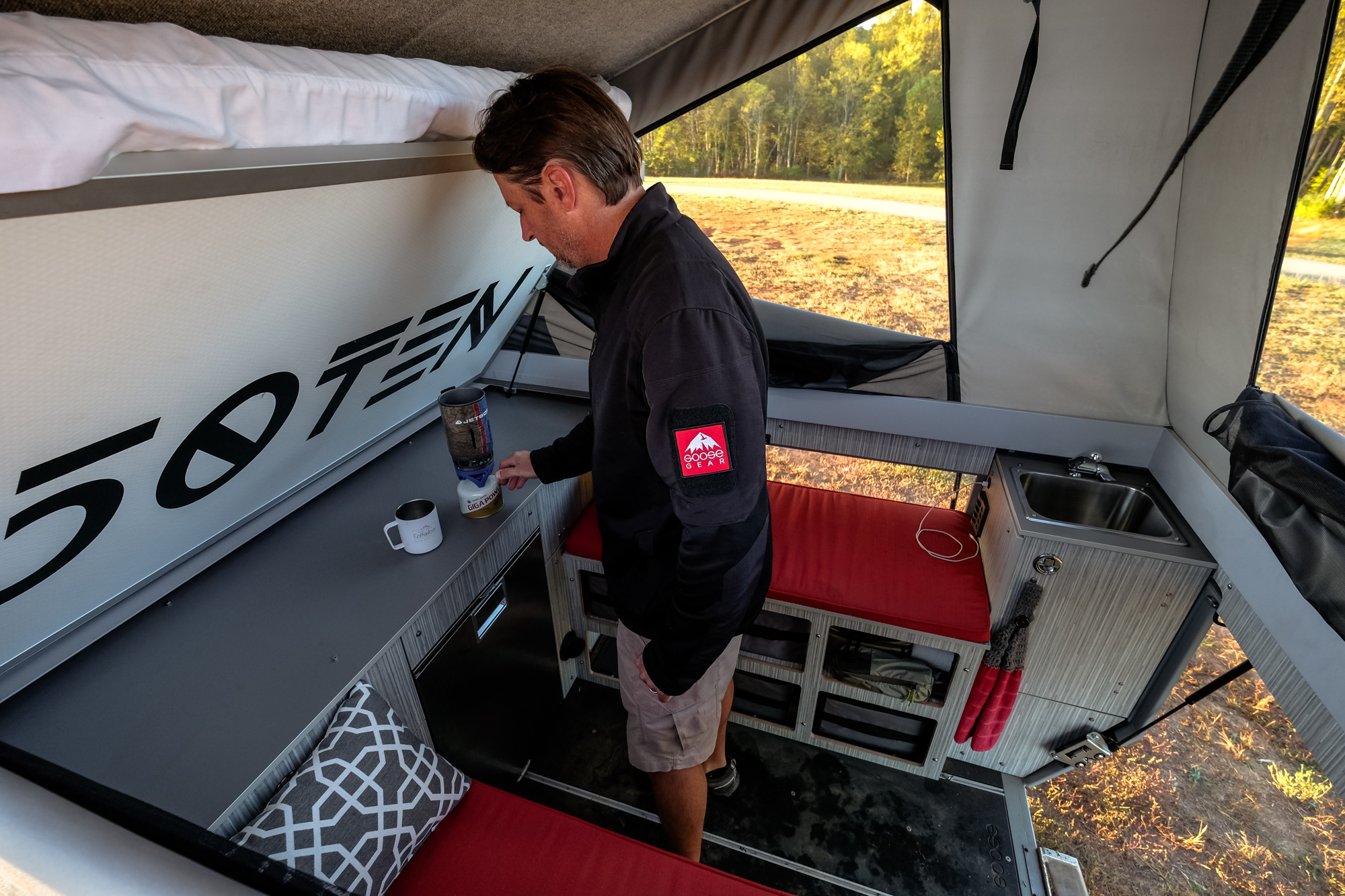
This layout was paired with an upright 110L Dometic CRX 110 fridge/freezer which is easier to access than traditional off-road fridges, and an integrated sink and faucet combo in the back. An Eberspacher diesel heater keeps the cabin warm in all weather conditions, and a passive-radiator-style heater by Elgen keeps your water hot at the tap. Almost all of the electrical systems are made by Victron Energy and run off of a 160ah smart lithium battery which charges from Twin Renogy 100-watt solar panels and the Ford’s factory dual alternators that produce 440 amps. Battery control is covered by the Victron BMS 12/200 battery management system, with monitoring by a BMV 712. Twin solar panels are mounted to the roof and controlled by another Victron component, the Smart Solar MPPT 100/50, which allows Goose Gear to wire the panels in series.

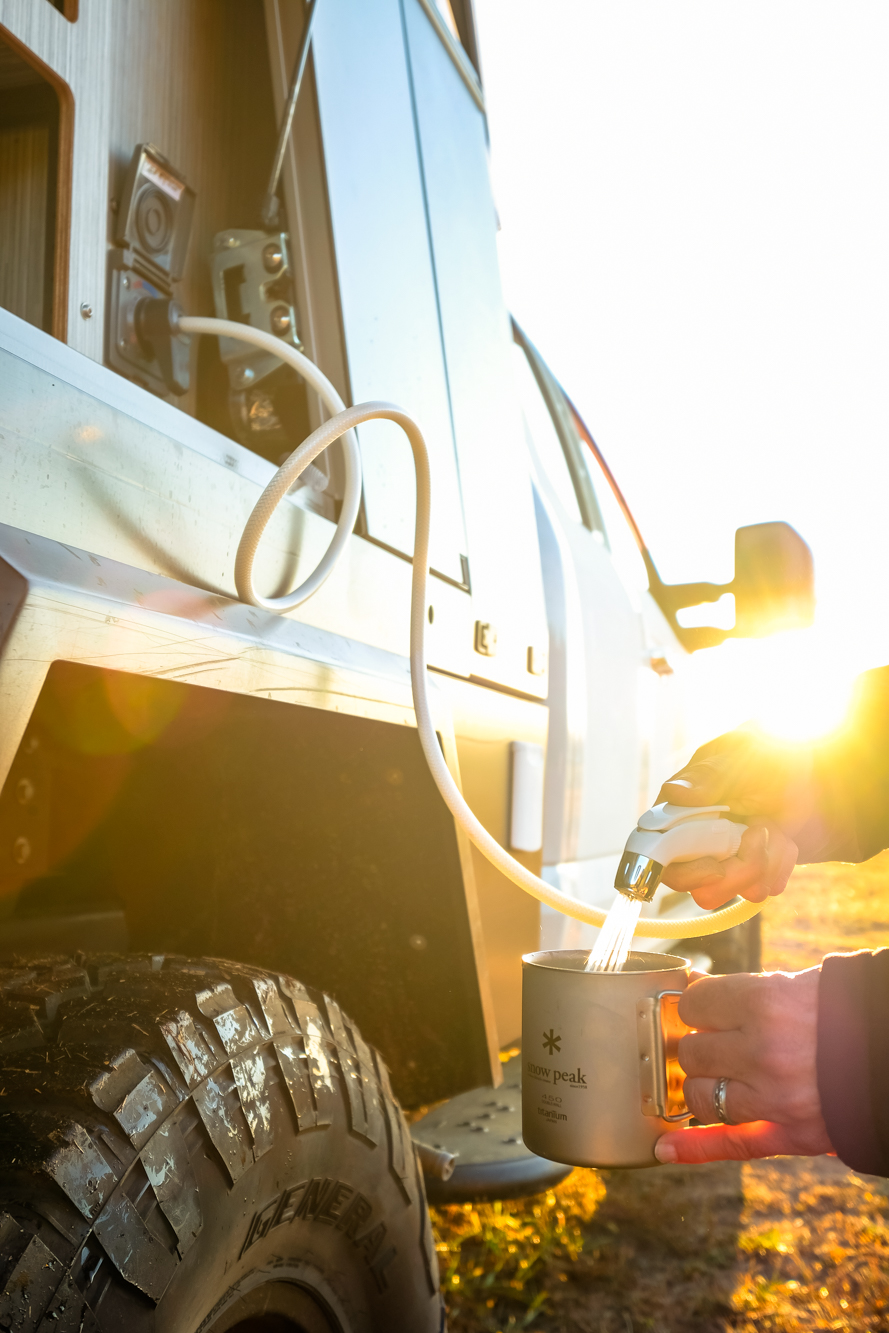
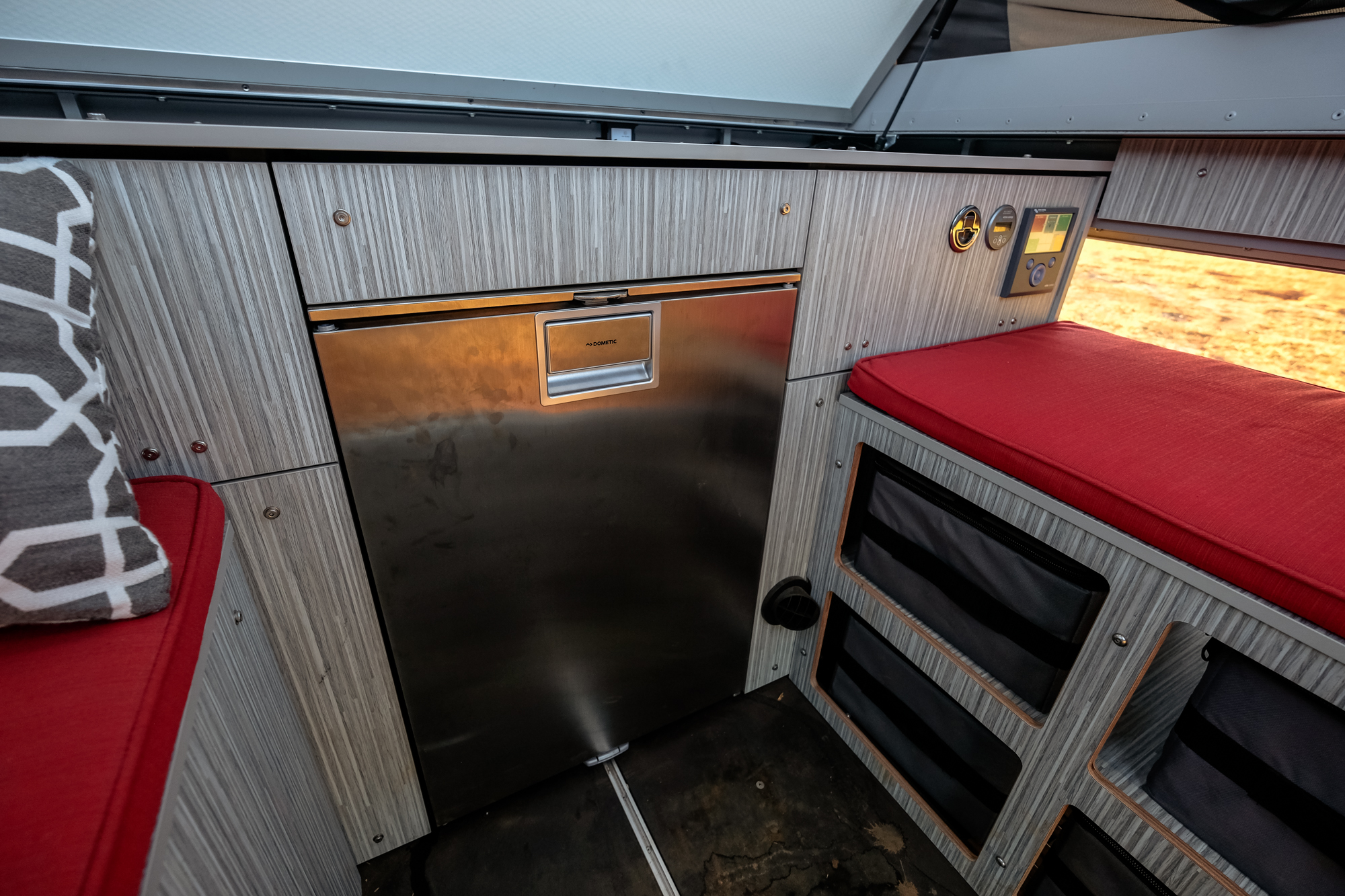
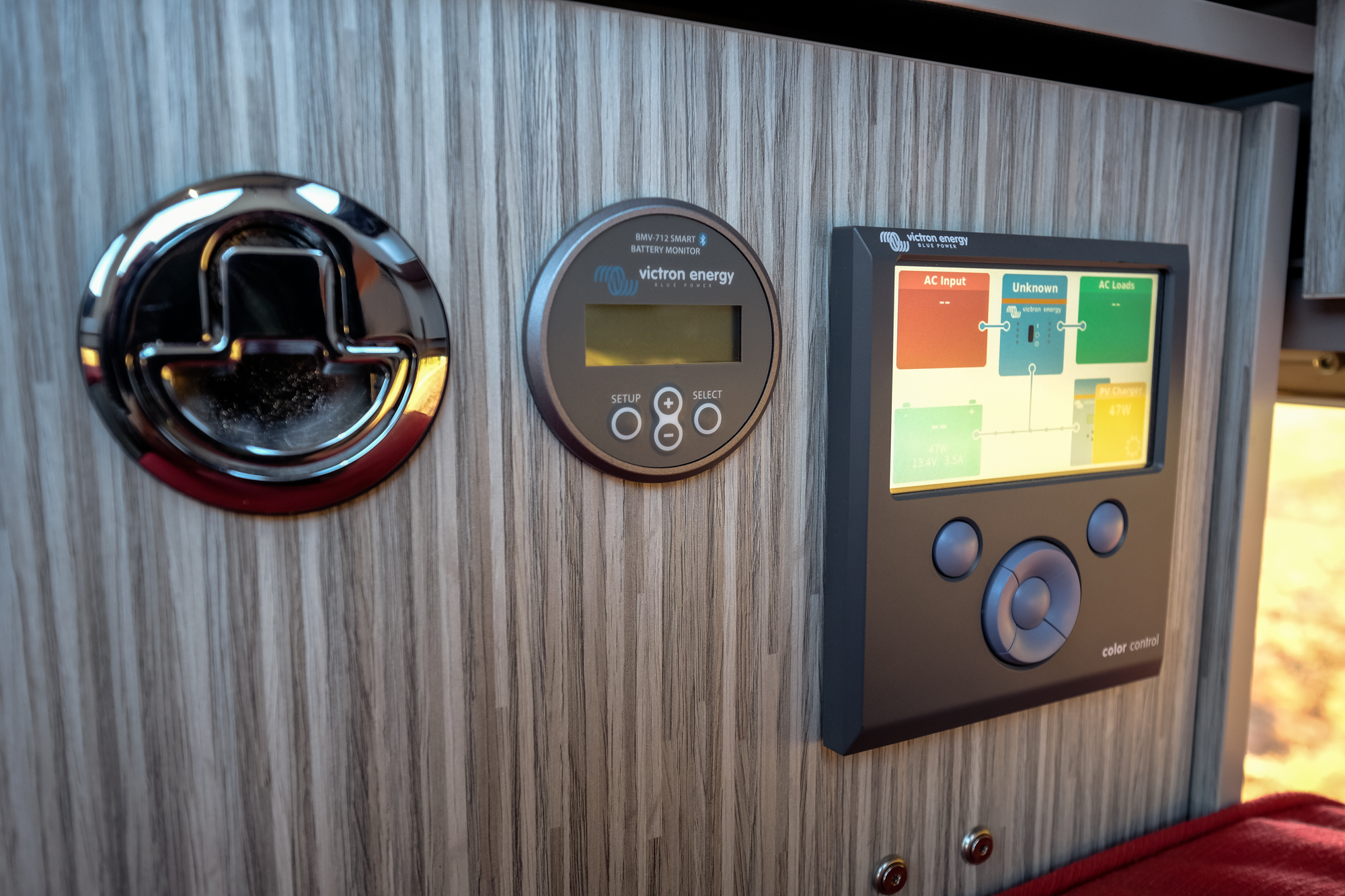

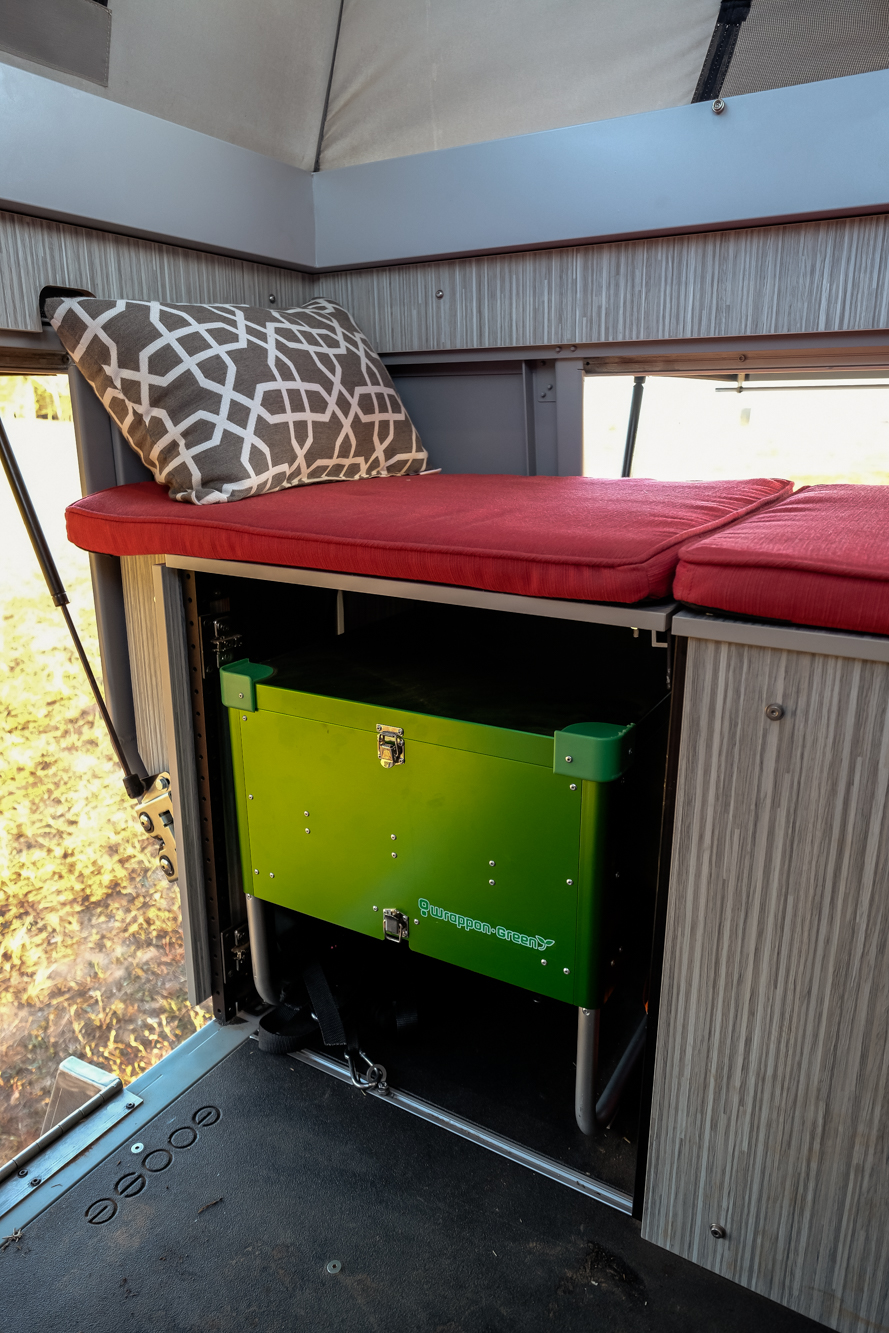
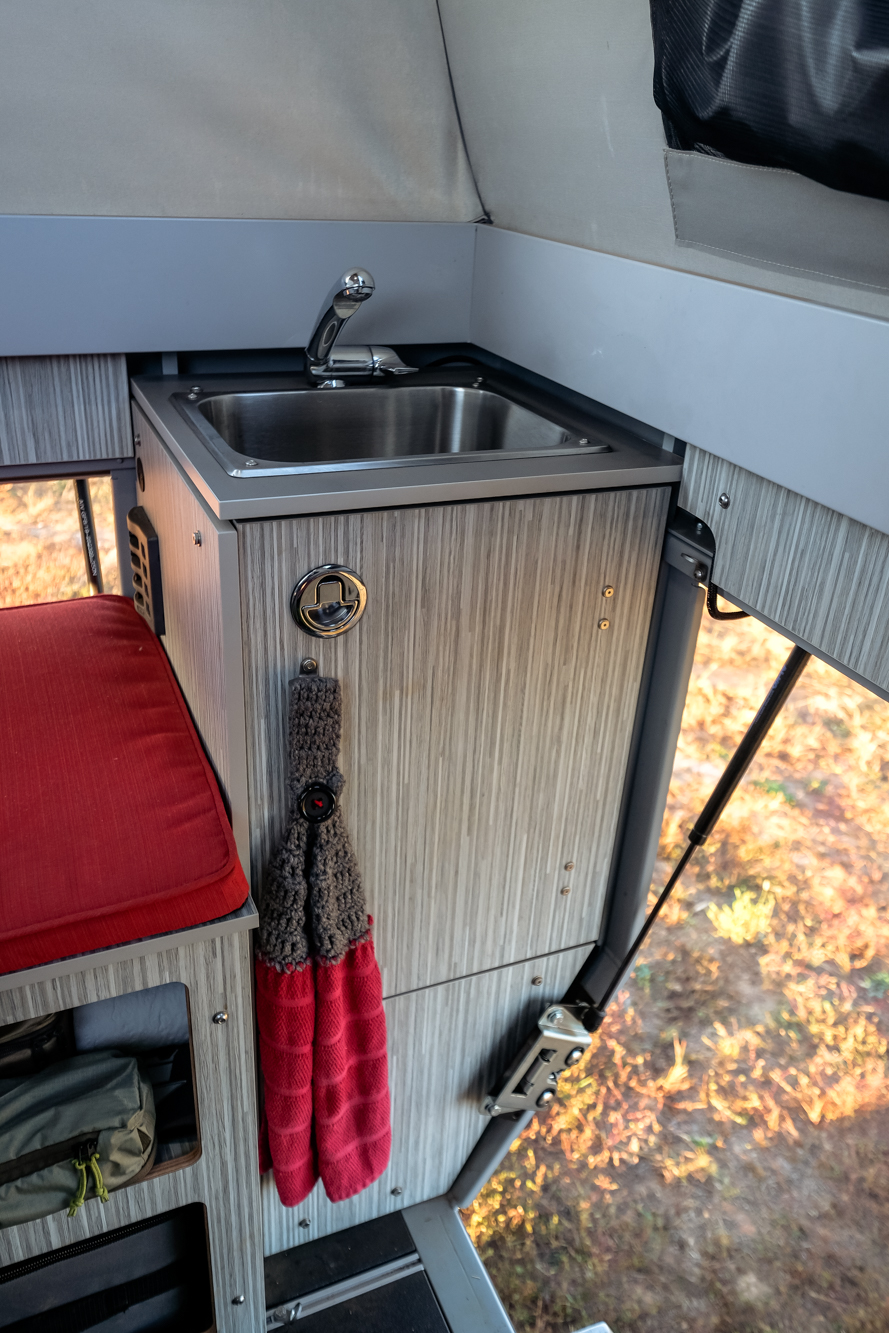
Obviously, one of the biggest reasons to have a camper on your truck is going to be getting a good night’s sleep, so they didn’t skimp on the bed. The FiftyTen carries one of the largest beds in its class, and it’s far from just a foam pad. It touts a German-made Froli suspension system paired with a Froli mattress, widely regarded as one of the best sleep systems for campers in the world. “It’s honestly more comfortable than my bed at home,” Brian joked, but I’m pretty sure he’s serious.

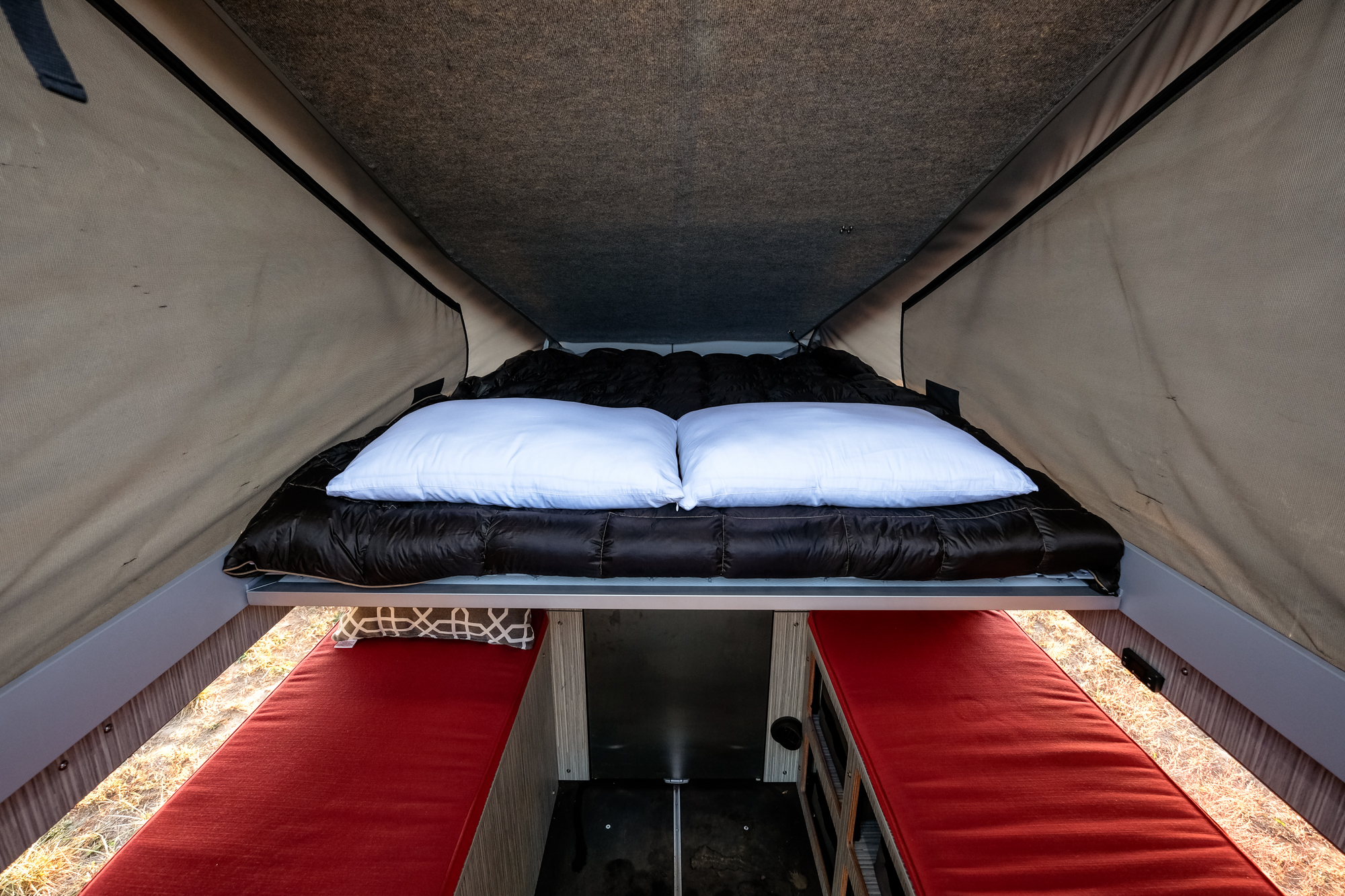
Interior
The finishing touches on this truck are inside the cab. In the front, you’ll find a 67 Designs dash mount system with carbon fiber arms and phone grip. Factory-installed upfitter switches control the lights and accessories, while a Yaesu FTM-100DR with a hidden head unit provides clear radio communications without taking up dash space. The back seat retains the 40 portion of the 60/40 split, but the 60 side has been replaced with a Goose Gear drawer module for a flat mounting surface and secure storage.
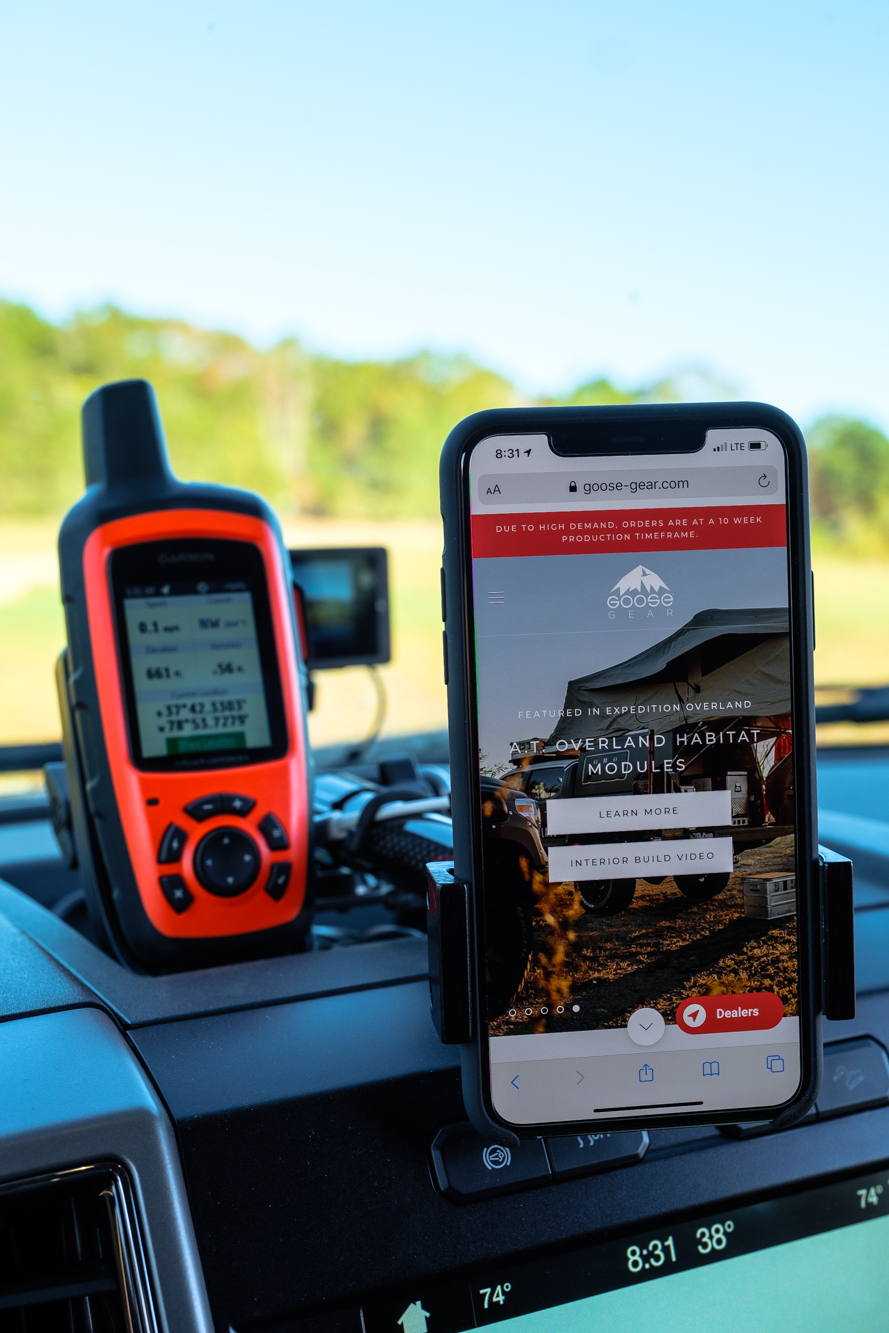
The Final Result
With all of the modifications completed, the fully loaded weight of Goose Gear’s F-350 is 10,440 pounds—5,040 on the front axle, and 5,400 on the rear. That might sound like a lot, but it’s a full 1,000 pounds under the truck’s GVWR, and only 180 pounds out of a perfect 50/50 weight distribution. How many overlanders can say that about their trucks?
The result is a vehicle with performance as sharp as its looks—that is as happy bombing down desert roads in California as it is taking on technical terrain in Virginia. It urges you to go faster down sandy washes with confidence-inspiring handling and predictable steering responses, while soaking up big impacts in a buttery ballet of suspension travel. Its slow-speed performance is equally impressive, as the truck clambers over rocks, clears approach, departure, and breakover challenges that have defeated some Jeeps, and breezes through cross-axle moguls without hesitation. The truth is that once you’re behind the wheel, you’re so busy having fun that you’d never know you were driving a fully equipped camper, and honestly, it just doesn’t get much better than that.
To learn more about the FiftyTen camper or Goose Gear, visit their website here.



